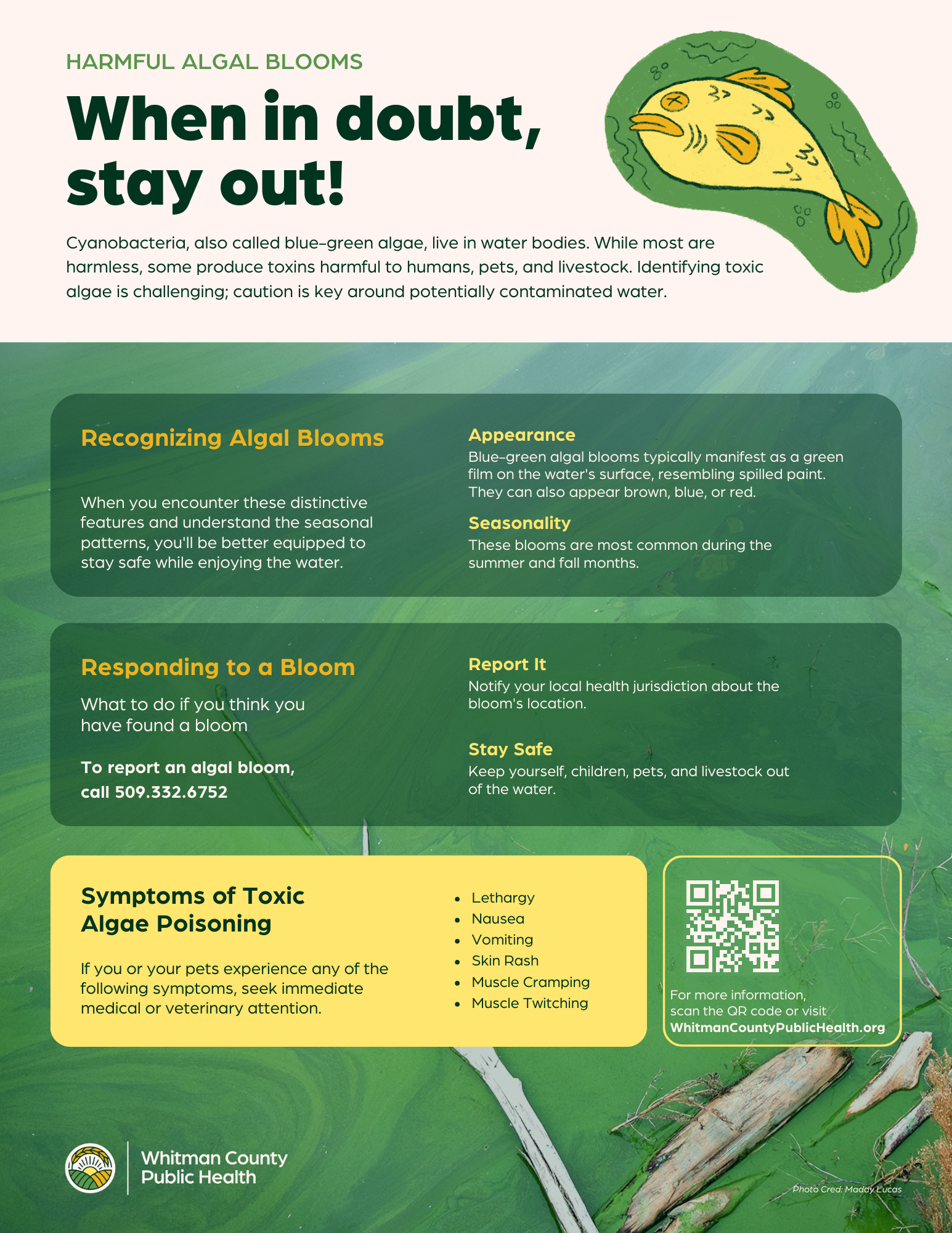Latest Testing Results from Monitored Algal Blooms
No testing has been performed to date in 2025.
Algal Bloom Factsheet

Frequently Asked Questions
Q: What is blue-green algae?
A: Blue-green algae (also called cyanobacteria) is found in fresh water. Blue-green algae is natural, and a source of food and shelter for marine life. When conditions are right, blue-green algae can multiply and "bloom" into algal blooms. Harmful algal blooms can create toxins that are a threat to the health of people, animals, and the environment.
Q: Are all algal blooms toxic?
A: Not all blooms produce toxins. The only way to know if a bloom is toxic is by testing it. All blooms should be considered toxic unless they have been tested and are negative.
Q: What do algal blooms look like?
A: These blooms will appear on the surface of water as a scum, and are green, blue, brown, and/or sometimes red. Their appearance is often described as looking like spilled paint on the surface of the water.
Q: What should I do if I think I’ve found a algal bloom?
A: To report a bloom in Whitman County, call our office at 509.332.6752 or email us at EH@whitmancounty.gov. Taking photos of the bloom is also recommended. You should also stay out of areas you believe have a bloom.
Report a Suspect Bloom
Suspected blooms in Whitman County can be reported here.
